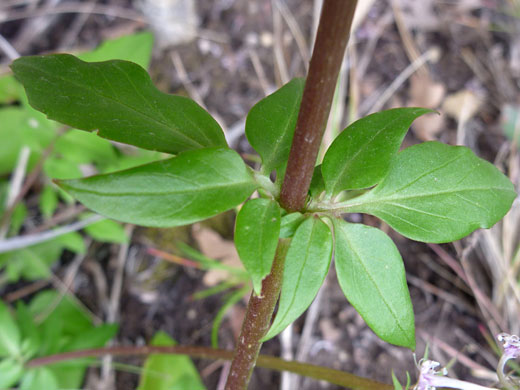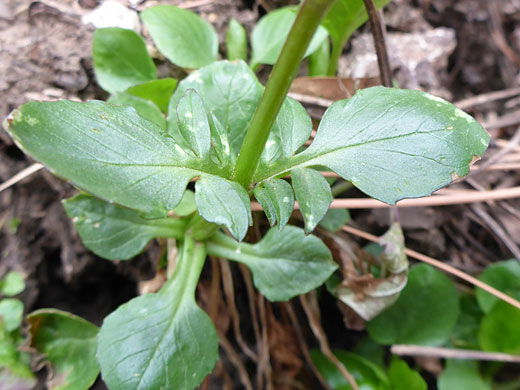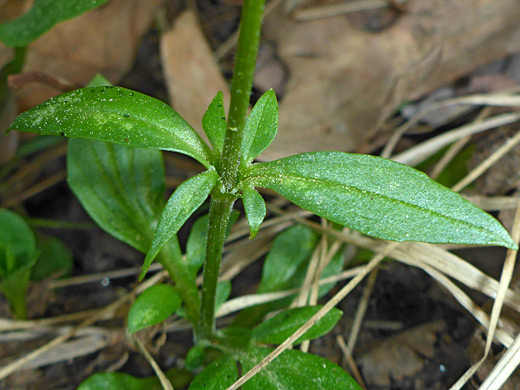Common name:
Arizona valerian
Family:
Scientific name:
Valeriana arizonica
Main flower color:
Range:
Most of Arizona and New Mexico, plus small adjoining areas of Utah, Colorado and Texas
Height:
Between 8 and 14 inches
Habitat:
Pine woodland, mountainsides, streambanks; 4,500 to 8,000 feet
Leaves:
Basal leaves are spatulate, stalked, up to 6 inches long, sometimes lobed. Stem leaves are shorter, clasping and divided
Season:
April to June
Valeriana arizonica produces one to several unbranched, stout but relatively short stems that have large, spatulate leaves at the base, tapering to long stalks, and a few opposite pairs of stem leaves, at quite widely-spaced intervals. Stem leaves are divided into two or three pairs of lance-shaped leaflets, while a whorl of short, linear, leafy bracts is positioned just below the inflorescence. The largest leaflet is at the tip of the leaf stalk.
Plants produce a spherical cluster of flowers in spring and early summer; each flower is around one inch long, supported by a greenish calyx split into thin, irregular lobes. The pale pink, tubular corolla is very narrow, opening to five lobes about a quarter of an inch in diameter. The throat of the corolla is slightly darker in color. Three stamens project beyond the lobes.
Plants produce a spherical cluster of flowers in spring and early summer; each flower is around one inch long, supported by a greenish calyx split into thin, irregular lobes. The pale pink, tubular corolla is very narrow, opening to five lobes about a quarter of an inch in diameter. The throat of the corolla is slightly darker in color. Three stamens project beyond the lobes.
All Contents © Copyright The American Southwest | Comments and Questions | Contribute | Site Map








